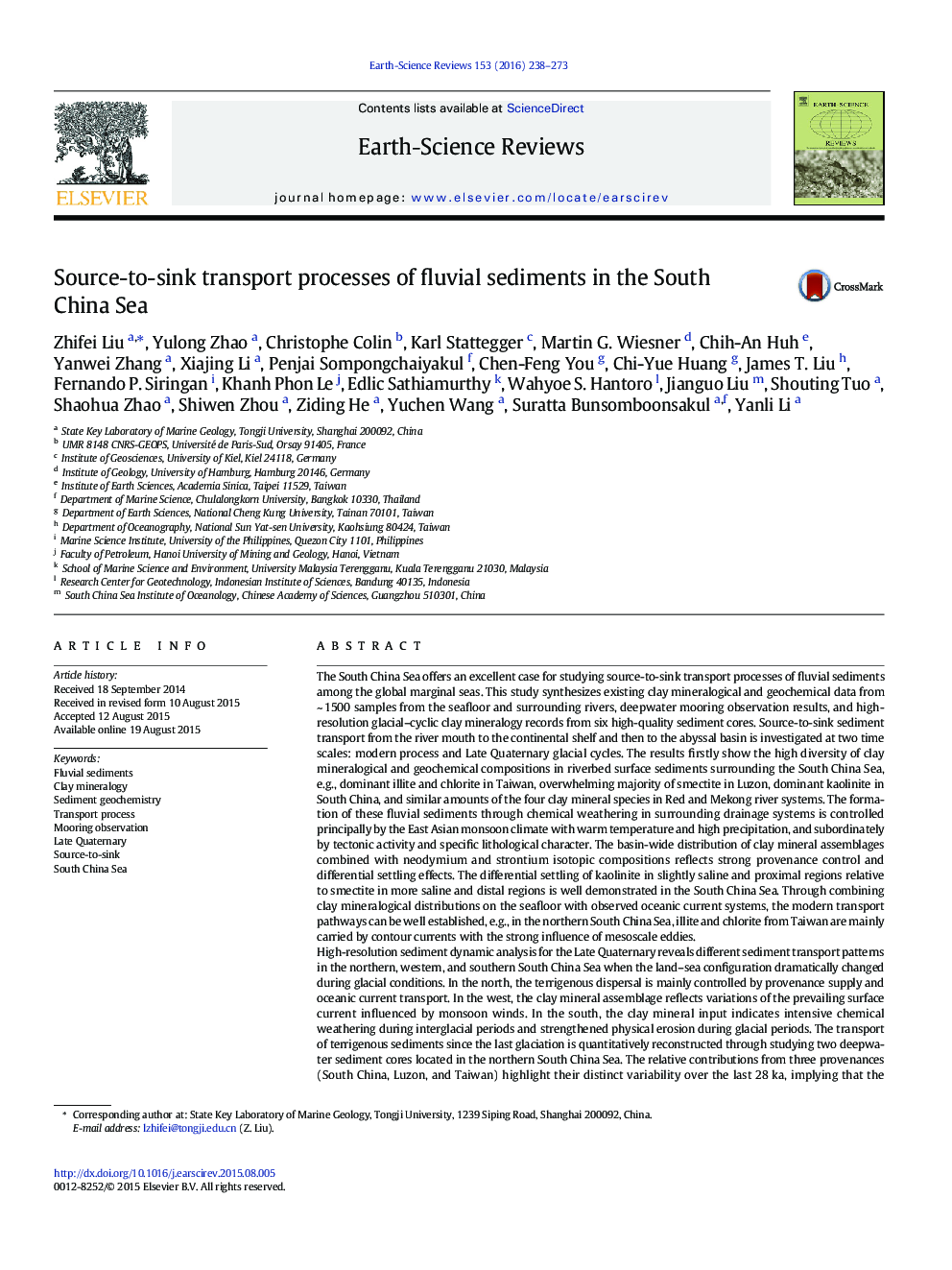| کد مقاله | کد نشریه | سال انتشار | مقاله انگلیسی | نسخه تمام متن |
|---|---|---|---|---|
| 4725613 | 1639949 | 2016 | 36 صفحه PDF | دانلود رایگان |
The South China Sea offers an excellent case for studying source-to-sink transport processes of fluvial sediments among the global marginal seas. This study synthesizes existing clay mineralogical and geochemical data from ~ 1500 samples from the seafloor and surrounding rivers, deepwater mooring observation results, and high-resolution glacial–cyclic clay mineralogy records from six high-quality sediment cores. Source-to-sink sediment transport from the river mouth to the continental shelf and then to the abyssal basin is investigated at two time scales: modern process and Late Quaternary glacial cycles. The results firstly show the high diversity of clay mineralogical and geochemical compositions in riverbed surface sediments surrounding the South China Sea, e.g., dominant illite and chlorite in Taiwan, overwhelming majority of smectite in Luzon, dominant kaolinite in South China, and similar amounts of the four clay mineral species in Red and Mekong river systems. The formation of these fluvial sediments through chemical weathering in surrounding drainage systems is controlled principally by the East Asian monsoon climate with warm temperature and high precipitation, and subordinately by tectonic activity and specific lithological character. The basin-wide distribution of clay mineral assemblages combined with neodymium and strontium isotopic compositions reflects strong provenance control and differential settling effects. The differential settling of kaolinite in slightly saline and proximal regions relative to smectite in more saline and distal regions is well demonstrated in the South China Sea. Through combining clay mineralogical distributions on the seafloor with observed oceanic current systems, the modern transport pathways can be well established, e.g., in the northern South China Sea, illite and chlorite from Taiwan are mainly carried by contour currents with the strong influence of mesoscale eddies.High-resolution sediment dynamic analysis for the Late Quaternary reveals different sediment transport patterns in the northern, western, and southern South China Sea when the land–sea configuration dramatically changed during glacial conditions. In the north, the terrigenous dispersal is mainly controlled by provenance supply and oceanic current transport. In the west, the clay mineral assemblage reflects variations of the prevailing surface current influenced by monsoon winds. In the south, the clay mineral input indicates intensive chemical weathering during interglacial periods and strengthened physical erosion during glacial periods. The transport of terrigenous sediments since the last glaciation is quantitatively reconstructed through studying two deepwater sediment cores located in the northern South China Sea. The relative contributions from three provenances (South China, Luzon, and Taiwan) highlight their distinct variability over the last 28 ka, implying that the southward shift of the inter-tropical convergence zone (ITCZ) at 16 ka BP caused an increased sediment contribution from South China, the intensified influence of the Kuroshio Current intrusion controls more efficient westward transport of Luzon sediments, and the stronger deepwater current transports Taiwan-sourced sediments further westward from the last glaciation to the Holocene.
Journal: Earth-Science Reviews - Volume 153, February 2016, Pages 238–273
